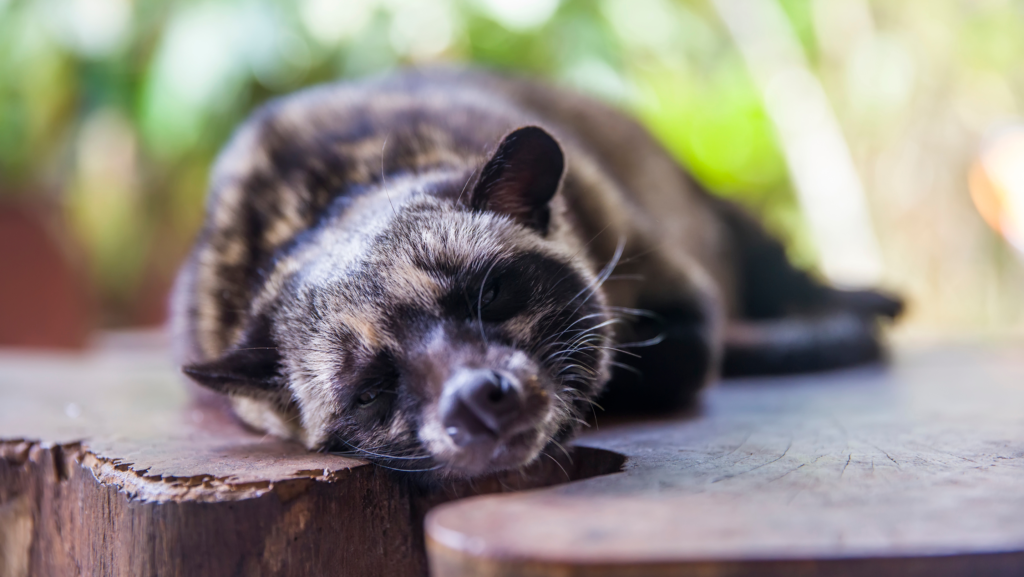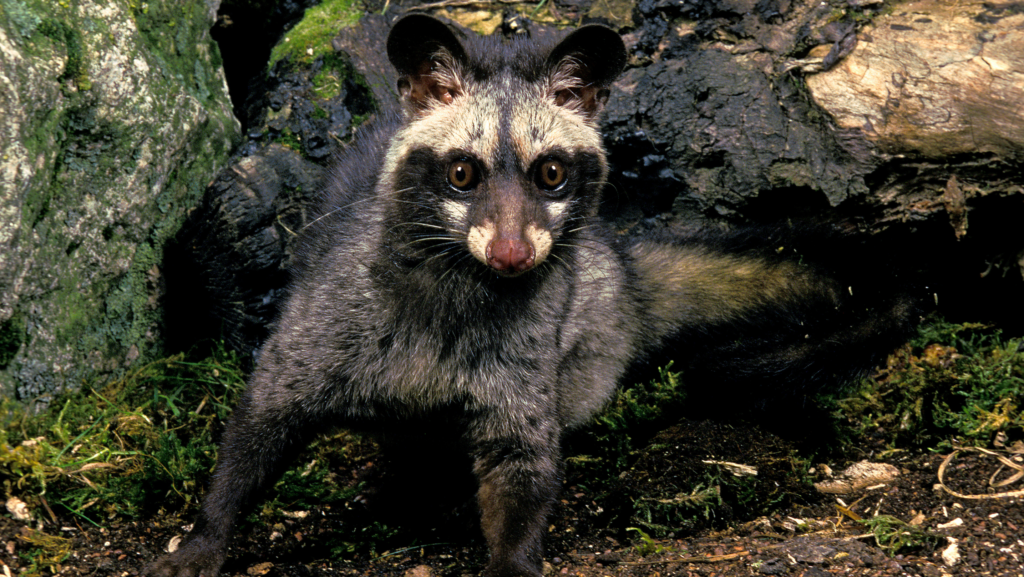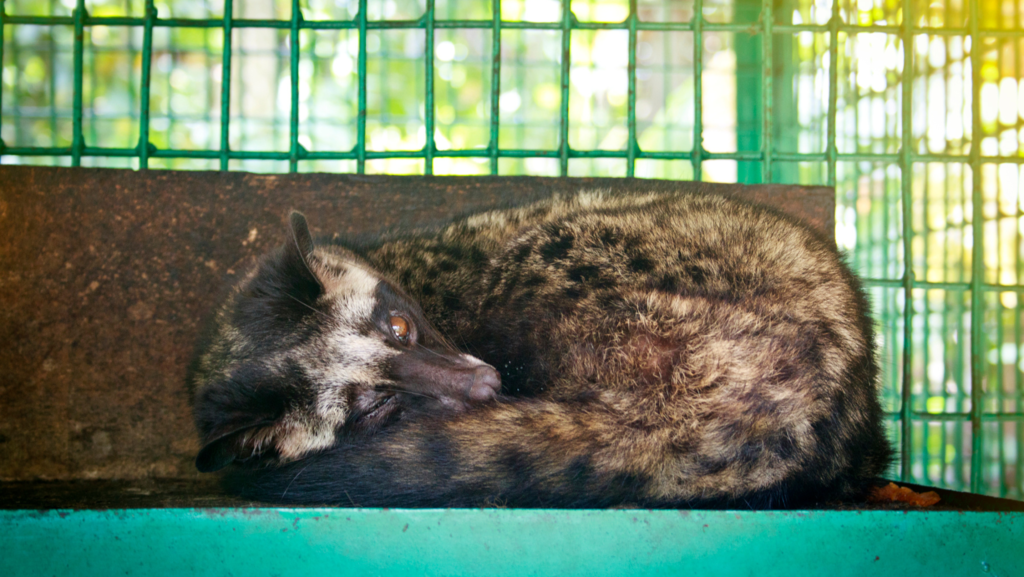The banded palm civet (Hemigalus derbyanus), a small and elusive carnivore native to Southeast Asia, is a fascinating creature with distinct characteristics throughout its life cycle.
Birth:

The life of a banded palm civet begins in the sheltered confines of a tree hollow or a dense thicket. The female gives birth to a litter of one to two offspring after a gestation period of about two months. The newborn civets are blind, deaf, and largely helpless, relying entirely on their mother for nourishment and protection during the initial stages of life.
Growth and Development:
As the weeks pass, the banded palm civet cubs undergo rapid growth and development. Their eyes open, revealing round, inquisitive orbs, and they become more active and exploratory. The mother introduces them to the skills necessary for survival in their habitat, including climbing trees and hunting for small insects, birds, and fruits.
Life and Habitat:

Banded palm civets are primarily arboreal, spending much of their time in the canopy of tropical forests. They are known for their striking appearance, characterized by a distinct banded pattern across their body. These nocturnal creatures are adapted for a primarily solitary and secretive lifestyle, utilizing their keen sense of smell and sharp claws to navigate their environment.
Food and Diet:
The banded palm civet is an omnivorous creature with a diverse diet. Its menu includes fruits, insects, small vertebrates, and occasionally bird eggs. With a preference for the fruit of palms and fig trees, they play a role in seed dispersal, contributing to the health of their ecosystem.
Reproductive Behavior:

Upon reaching sexual maturity at around one to two years of age, banded palm civets enter the breeding phase of their life cycle. Mating typically occurs during the breeding season, which may vary based on geographic location. Female civets, after mating, seek out secluded spots to give birth to the next generation, perpetuating the cycle of life in the dense forests they call home.
Death and Conservation:
In the wild, banded palm civets face threats such as habitat loss due to deforestation and hunting for their meat or the exotic pet trade. Their lifespan in the wild can vary, influenced by factors like predation, disease, and the availability of resources. Conservation efforts, including the protection of their natural habitats and raising awareness about their importance in maintaining ecological balance, are crucial for the survival of these captivating creatures.
The banded palm civet’s life story is intricately woven into the tapestry of Southeast Asian ecosystems, highlighting the delicate balance of nature and the importance of preserving the diverse habitats these creatures call home.

